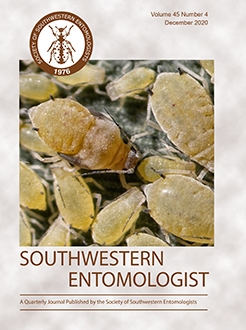The sugarcane aphid, Melanaphis sacchari (Zehntner), has become the most important insect pest of sorghum (Sorghum bicolor [L.] Moench) in Mexico after its invasion in 2013. Effectiveness of several plant extracts and dish soap were compared to flupyradifurone in a field experiment against M. sacchari on sorghum in northeastern Mexico during the fall growing season of 2016. Neem (Azadirachta indica A. Juss.), garlic (Allium sativum L.), and habanero pepper (Capsicum chinense Jacq.) were not effective against M. sacchari, with density similar to the check treatment, peaking at >1,000 aphids per leaf. Dish soap killed 72% of M. sacchari within 2 hours, but aphids soon resurged and reached >500 per leaf within 6 days. Flupyradifurone was very effective at managing M. sacchari below economic threshold (<50 aphids per leaf) during 28 days. Severe damage by M. sacchari when treated with plant extracts, dish soap, or the check resulted in grain yield loss >78%, as compared to flupyradifurone. In conclusion, neem, garlic, habanero pepper, and dish soap have no potential as commercial control methods against M. sacchari under the conditions tested in this study.
How to translate text using browser tools
11 January 2021
Field Evaluation Of Bioinsecticides Against Melanaphis sacchari (Hemiptera: Aphididae) on Sorghum
Luis A. Rodríguez-del-Bosque
ACCESS THE FULL ARTICLE

Southwestern Entomologist
Vol. 45 • No. 4
December 2020
Vol. 45 • No. 4
December 2020




